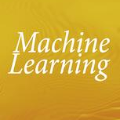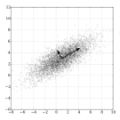Dementia is a neuropsychiatric brain disorder that usually occurs when one or more brain cells stop working partially or at all. Diagnosis of this disorder in the early phases of the disease is a vital task to rescue patients lives from bad consequences and provide them with better healthcare. Machine learning methods have been proven to be accurate in predicting dementia in the early phases of the disease. The prediction of dementia depends heavily on the type of collected data which usually are gathered from Normalized Whole Brain Volume (nWBV) and Atlas Scaling Factor (ASF) which are normally measured and corrected from Magnetic Resonance Imaging (MRIs). Other biological features such as age and gender can also help in the diagnosis of dementia. Although many studies use machine learning for predicting dementia, we could not reach a conclusion on the stability of these methods for which one is more accurate under different experimental conditions. Therefore, this paper investigates the conclusion stability regarding the performance of machine learning algorithms for dementia prediction. To accomplish this, a large number of experiments were run using 7 machine learning algorithms and two feature reduction algorithms namely, Information Gain (IG) and Principal Component Analysis (PCA). To examine the stability of these algorithms, thresholds of feature selection were changed for the IG from 20% to 100% and the PCA dimension from 2 to 8. This has resulted in 7x9 + 7x7= 112 experiments. In each experiment, various classification evaluation data were recorded. The obtained results show that among seven algorithms the support vector machine and Naive Bayes are the most stable algorithms while changing the selection threshold. Also, it was found that using IG would seem more efficient than using PCA for predicting Dementia.
翻译:痴呆是一种神经精神失常的脑血管疾病,通常在一个或多个大脑细胞部分或完全停止工作时发生。 在疾病早期阶段对这种疾病进行诊断,对于挽救病人生命免遭不良后果并为他们提供更好的医疗保健是一项至关重要的任务。 机器学习方法已证明在疾病早期预测痴呆症方面是准确的。 对痴呆症的预测在很大程度上取决于通常从正常的完整脑量(nWBV)和阿特拉斯增长系数(ASF)收集的数据类型,这些数据通常从正常的完整脑量(nWBV)和阿特拉斯增长系数(ASF)中收集,通常从磁共Resonance成像(MIMI)中测量和校正。 年龄和性别等其他生物特征特征也能够帮助诊断痴呆症。 虽然许多研究利用机器学习来预测痴呆症,但我们无法得出这些方法在不同的实验条件下更准确的稳定性。 因此,本文调查了从正常整体脑部中学习7个层面的算法的稳定性。 为了达到这个目的,在7个机器学习算法中进行了大量实验, 使用7个机器学习算法和2个降低功能算算算法,, 也就是值也用了100G值分析结果。 分析(IG) 分析结果显示和结果显示, 值(IGation) 分析结果显示, 值和结果显示的精值值的精度值值值值值值值值值值值的精度值的精度值的精度值值的精度。



